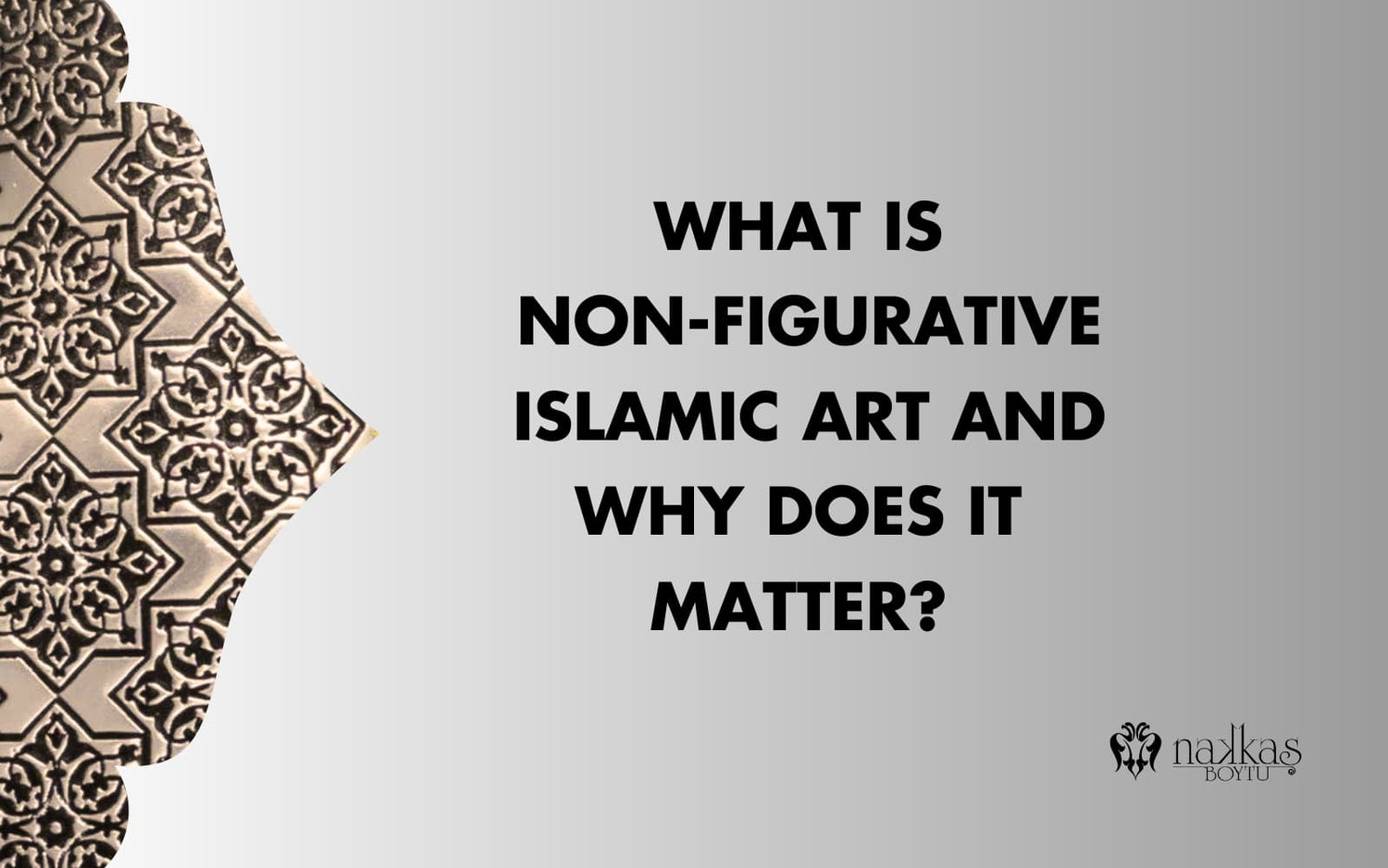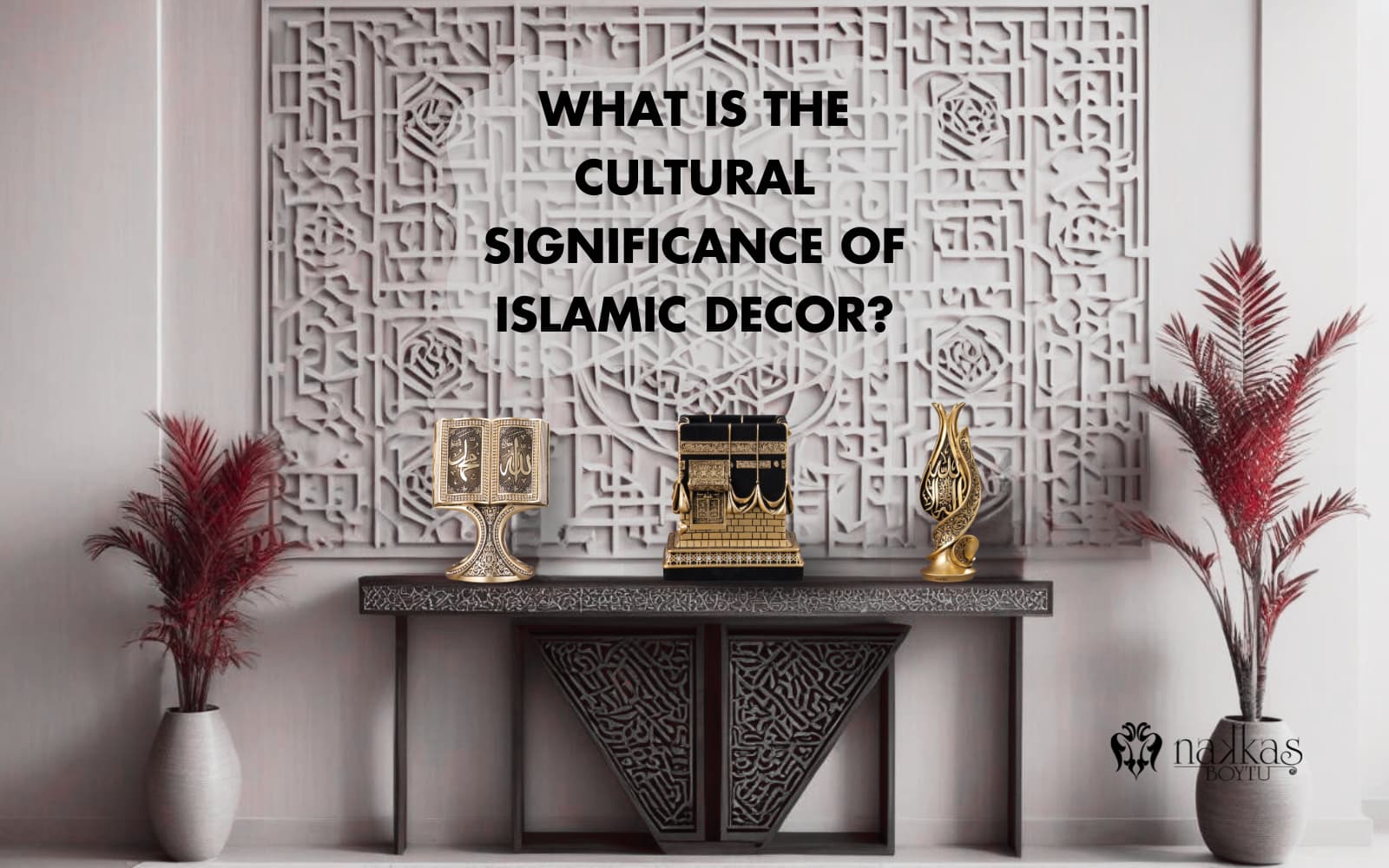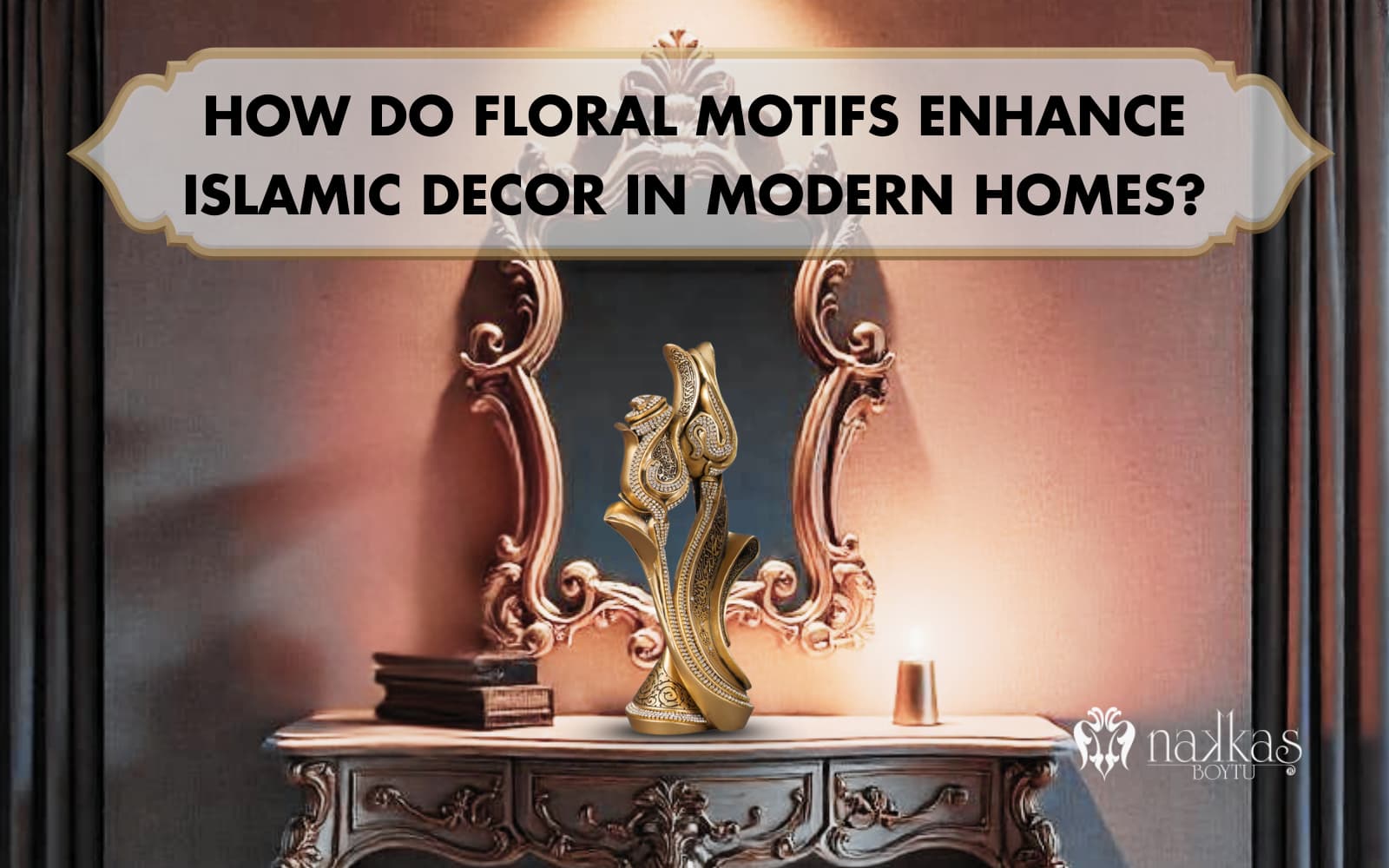Islamic Muslim art possesses a unique visual language that has inspired cultures for centuries. Instead of depicting the physical forms of humans or animals, Islamic artwork elegantly employs abstraction to decorate spaces, enrich lives, and inspire contemplation. This distinctive artistic tradition transforms surfaces and objects, utilizing carefully designed motifs rooted in Islamic principles.
Exploring Islam and Muslim art reveals a rich heritage where calligraphy, geometric patterns, and organic forms converge to express profound spiritual and aesthetic values. This blog post delves into the captivating world of non-figurative Islamic art, addressing questions surrounding art and its significance.
Understanding the Essence of Non-Figurative Islamic Art
Non-figurative Islamic art moves beyond representing the physical world and instead focuses on abstraction, repetition, and symmetry. This artistic approach reflects divine unity and order rather than human or animal figures. Through art in Islam, artists channel their creativity into patterns that express harmony, spirituality, and an infinite connection to Islamic culture.
The philosophy behind Islamic Muslim art is rooted in Islamic aniconism, which discourages imagery of living beings, especially in religious contexts. This principle led to the development of stunning geometric patterns, floral motifs, and Arabic calligraphy, which remain central to Islamic artwork today.
How Does Islamic Art Differ from Western Art?
Islamic art differs from Western art in several key ways:
- Islamic art emphasizes patterns and abstraction, while Western art often focuses on realistic figures and portraiture.
- Muslim art integrates calligraphy as a core artistic form, while Western art typically separates text from imagery.
- Islam pictures divine beauty through repeated geometric patterns, while Western art often captures single moments in time.
- Islamic artwork decorates various functional objects, whereas Western art often distinguishes between fine art and applied crafts.
These differences stem from cultural perspectives on art in Islam, where representation is not a means of storytelling but a reflection of universal harmony.
Why Is Figurative Art Limited in Islamic Tradition?
Figurative art receives limited use in Islam and decoration due to both religious guidance and artistic philosophy:
- Islamic aniconism discourages depictions of living beings to prevent idolatry.
- The focus shifts to celebrating divine order through calligraphy, geometric precision, and floral patterns.
- Artists use creativity to design intricate non-figurative patterns instead of human or animal representations.
- The tradition values spiritual depth over physical likeness, creating a distinctive style unique to Islamic Muslim art.
These artistic choices led to the flourishing of non-figurative Islamic decoration, where faith and artistic excellence merged.
What Are the Main Types of Non-Figurative Islamic Art?
Non-figurative Islamic art is expressed through several key forms, each showcasing unique aesthetic principles and techniques. Deeply rooted in Islamic culture and history, these forms include calligraphy, geometric patterns, arabesque motifs, and floral and vegetal motifs. While distinct, these types often intertwine and complement each other in Islamic artwork, creating harmonious and intricate designs admired across the globe.

How Is Calligraphy Used in Islamic Art?
Calligraphy holds the most esteemed position among Islamic art forms. Primarily utilizing the elegant Arabic script, it transcends mere writing to become a visual art in itself. Islamic calligraphy frequently features revered texts such as Quranic verses, Hadiths, and other religious expressions. Skilled calligraphers employ fluid strokes and aesthetically pleasing letterforms to decorate a vast array of surfaces, from mosque walls and architectural elements to illuminated manuscripts, decorative household items, and luxurious textiles, making calligraphy a ubiquitous and highly valued aspect of muslim art.
What Role Do Geometric Patterns Play?
Geometric patterns are fundamental to non-figurative Islamic art, serving as a core design element across various mediums. These patterns are constructed from repeating and interlocking shapes like stars, circles, squares, triangles, and polygons, forming complex and infinitely expandable designs. Geometric patterns in muslim art are not merely decorative; they symbolize the inherent order and harmony of the universe as perceived through an Islamic lens. They also represent infinity, with patterns that can theoretically extend endlessly, and are prevalent in every form of Islamic artwork, adorning tiles, household objects, architectural facades, and book illuminations alike.
Why Are Arabesque Motifs So Prominent?
Arabesque designs, characterized by their flowing, curvilinear lines and organic shapes, are another prominent motif in Islamic art. These motifs are often interpreted as stylized representations of plants and vines, presented in abstract and repeating forms that suggest continuous growth and movement. Arabesques, a key feature in many Islamic pictures showcasing architectural details, symbolize God's creation's boundless, ever-expanding nature and the interconnectedness of all things. Frequently found decorating mosque walls, domes, and various home decor items, arabesque patterns enrich surfaces with visual complexity and a sense of organic vitality.
How Are Floral and Vegetal Motifs Used in Islamic Art?
Floral and vegetal motifs in Islamic art interpret natural elements like leaves, flowers, trees, and vines into stylized, patterned forms. These designs, ranging from relatively naturalistic to highly abstract depending on the era and region, serve to evoke the beauty of nature and often reference descriptions of paradise gardens found in Islamic texts. By incorporating plant-based forms, Islamic art forges a connection with the natural world while maintaining the principles of harmonious, ordered patterns. Floral and vegetal motifs are frequently used to soften the geometric and calligraphic elements within a design, adding a layer of organic grace to Islamic decor.
How to Use Islamic Art in Modern Home Decor?
Non-figurative Islamic artwork integrates seamlessly into contemporary spaces.
- Geometric designs complement minimalist interiors.
- Calligraphic art serves as a striking focal point in any room.
- Arabesque and floral motifs add depth to decorative items, furniture, and fabrics.
These artistic elements allow homeowners to decorate their spaces with Islamic Muslim art, blending heritage with modern aesthetics.
Can Traditional Islamic Art Blend with Contemporary Interiors?
Yes, traditional Islamic art fits well in modern spaces. Its visual language is versatile. Geometric patterns work with minimalist styles. Calligraphy stands out in simple spaces. Arabesque adds detail to modern furniture. Islamic art elements can enhance various interior designs. They bring cultural richness to modern homes. This fusion of tradition and modernity allows homeowners to embrace an Islamic decor style that is timeless and adaptable to contemporary living spaces.
What Are the Best Ways to Incorporate Islamic Calligraphy at Home?
Islamic calligraphy enhances homes through:
- Framed calligraphic prints as wall art
- Calligraphy on decorative plates or ceramics
- Decor items with calligraphic designs
- Carved wooden panels with inscriptions
- Small calligraphy pieces on shelves or desks
Displaying Islamic calligraphy in different forms allows homeowners to create a space reflecting artistic beauty and spiritual significance.
How Can Geometric Patterns Enhance Interior Design?
Geometric patterns enhance interior design by:
- Creating visual interest on walls through tiles or wall hangings
- Adding texture and pattern to floors through carpets and rugs
- Providing structure and rhythm in textiles like curtains and upholstery
- Creating interesting light effects through pierced metal lamps or screens
The timeless appeal of geometric patterns allows them to seamlessly blend into various design styles, bringing both harmony and sophistication to any space.
What Colors Define Islamic Art and Their Meanings?
Color palettes in Islamic art are rich with symbolic meaning, with prominent colors including:
- Green, associated with life and paradise, is widely used in mosques and Islamic spaces.
- Blue represents the heavens and contemplation, often seen in tilework and domes.
- Black, symbolizing authority and reverence, is most notably present in the Kaaba’s sacred cloth.
- White, reflecting purity and peace, is a key color in Islamic architecture and religious attire.
- Gold, signifying divine splendor and enlightenment, adorns mosques and Qur'anic decorations, enhancing the grandeur of Islamic heritage.
For more information, you can read our article titled “Islamic Colors: A Journey Through Cultural Symbolism and Aesthetics”
Which Materials Are Commonly Used in Islamic Art and Decor?
Islamic decor uses wood, metal, polyester, ceramic, glass, textiles, stone, and paper for aesthetic and functional purposes. Wood is carved for furniture and panels, while metal enhances plaques and lanterns. Polyester allows for durable figurines and plaques. Ceramic and porcelain showcase intricate patterns on tiles and plates. Glass and crystal add elegance to lamps and chandeliers. Textiles like silk and cotton appear in rugs and cushions. Stone and tile provide durability in architecture, and paper remains key for calligraphy and framed artwork. These diverse materials are used in Islamic decor to create visually stunning and spiritually meaningful pieces that reflect tradition and craftsmanship.
Bringing Non-Figurative Beauty into Your Home: Choosing Islamic Decor
Non-figurative Islamic art offers a timeless way to bring spirituality, elegance, and harmony into your home. These artistic elements create a serene atmosphere through calligraphy, geometric patterns, and floral motifs while reflecting deep cultural and religious significance. By selecting decor that embodies these principles, you can transform your space into a place of beauty and spiritual inspiration.
For those looking for meticulously crafted Islamic decor pieces, Nakkaş Boytu offers a stunning collection of calligraphy art, geometric designs, and custom Islamic decorations. Explore the collection to find unique pieces that blend traditional Islamic artistry with modern aesthetics, perfect for enhancing any home or gifting to loved ones.








